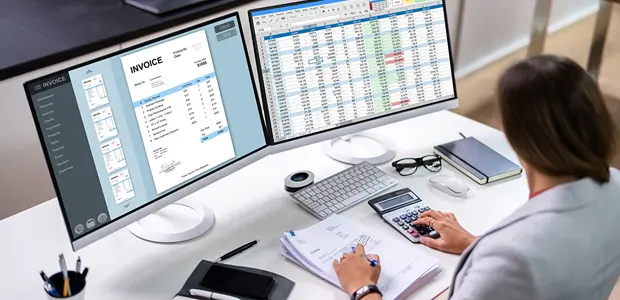The program Geriatric In-Home Dementia Care which stands for GUIDE administered by the Centers for Medicare & Medicaid Services (CMS) is the next step towards the provision of support to dementia patients using a sophisticated payment system.
This guide seeks to elaborate on the GUIDE program’s payment system it’s structure, service categories, reimbursement amounts, adjustments and data management requirements and expectations. Moreover, in this guide, CareMSO’s skills on billing in regard to GUIDE are presented.
An Overview of The Payment Methodology within the GUIDE Program
The payment methodology in the GUIDE program has been created to guarantee that in-home dementia care services are compensated in a fair and reasonable manner. It incorporates several essential features to enable integrated patient care and was adopted with an inclusive approach.
What are the Essential Features of the Payment Methodology
- Payment Structure
- Service Categories
- Reimbursement Rates
- Payment Adjustments
- Data Reporting and Monitoring
- Payment Structure
The payment structure in the GUIDE program is one of the most important components in ensuring that the service providers obtain adequate remuneration for the care provided.
The structure provides for a base payment system, performance bonuses and payment of certain adjustment payments based on level of care provided.
Base Payment
The base payment refers to a guaranteed amount that is made for the standard services offered to each patient suffering from dementia. In this case, it guarantees that other providers will be held in a minimum level compensating.
Performance Bonus
In the case of specific quality measures, providers are given incentives in a form of performance bonuses. Such bonuses are focused on not only improving the settings under which patients receive care, but also patient outcomes.
Adjustment Payments
The purpose of payment adjustment is to address patient factors likeable acuity or care demands and complexity in order that expenditures correspond to the actual level of care requirements.
Service Categories
The GUIDE program classifies services into functional categories for the purposes of facilitating billing and reimbursement. Each service category as defined has a rate of payment which incorporates the cost and the complexity of the services.
Medical Management
Description: Medical management includes diagnostic and supportive contacts, prescription medicines, progress in the dementia diagnosis.
Payment Rate: $150 per visit.
Details:
Frequency: Visits four times a month.
Components: Assessment and medication of the concerned illness or its complications, liaison with other care providers.
Therapeutic Services
Description: Therapists longstanding includes occupations therapy & physical therapy & speech therapy as the fourth discipline with forms of treatment helps maintaining functioning and quality of life.
Payment Rate: $100 – $130 per session.
Characterization of services and details provided in this link
Occupational Therapy: Focus on development of skills necessary for activities of daily living.
Physical Therapy : Works on enhancement of strength and mobility.
Speech and Language Therapy: Helps in articulation as well as swallowing disorders.
Personal Care
Description: Personal care services provide assistance with bathing, dressing, toileting, meal preparation and other activities of daily living.
Payment rate: $50 per day.
Details
Daily Assistance: Assistance with hygiene, meal preparation and doing other chores.
Frequency: Frequency is every day.
Respite Care
Description: Respite care services are offered to provide caregivers a break from the constant care-taker role and relieve the caregiver/exhausted individual without compromising care for the patient.
Payment Rate: $200 per day.
Details:
How long does it last: Evidently 1-2 days in 1month.
Reason: It gives the opportunity to the caregivers to take a rest and to recuperate.
Reimbursement Rates
Reimbursement rates are meant to reimburse costs associated with the provision of quality in-home dementia care.
The flat rate for maximum places is based on the type of service provided and level of patient needs.
| Service Type | Base Reimbursement Rate | Performance Bonus | Total Potential Payment |
|---|---|---|---|
| Medical Management | $150 per visit | Up to $50 | $200 per visit |
| Occupational Therapy | $100 per session | Up to $30 | $130 per session |
| Physical Therapy | $120 per session | Up to $30 | $150 per session |
| Speech Therapy | $130 per session | Up to $30 | $160 per session |
| Personal Care | $50 per day | Up to $20 | $70 per day |
| Respite Care | $200 per day | Up to $50 | $250 per day |
Payment Adjustments
Payment adjustments are applied based on factors such as patient acuity, geographic location, and care complexity, ensuring that payments accurately reflect the care provided.
Patient Acuity
Description: Patient acuity refers to the severity and complexity of the patient’s dementia. Higher acuity requires more intensive care.
Adjustment Amount: Up to 20% increase in payment.
Details:
- Assessment: Evaluation of the patient’s acuity level.
- Impact: Higher acuity cases receive increased payments to cover additional care needs.
Geographic Location
Description: Geographic location affects the cost of living and service delivery. Adjustments account for these regional differences.
Adjustment Amount: Up to 15% increase in payment.
Details:
- Regional Variations: Payments are adjusted based on service costs in different regions.
- Purpose: Ensures fair compensation in higher-cost areas.
Care Complexity
Description: Care complexity involves additional needs such as multiple therapies or specialized services. Adjustments reflect the overall complexity of care required.
Adjustment Amount: Up to 25% increase in payment.
Details:
- Assessment: Complexity is assessed based on the number and type of services provided.
- Impact: More complex care cases receive higher payments.
Data Reporting and Monitoring
Data reporting and monitoring are essential for ensuring transparency and evaluating the effectiveness of the GUIDE program. Providers must submit regular reports on service delivery, patient outcomes, and performance metrics.
Service Delivery Report
Description: Details the services provided to each patient, including dates and types of services rendered.
Frequency: Monthly
Content Required:
- Service Details: Dates, types, and frequency of services.
- Patient Information: Basic demographic and health information.
Patient Outcomes Report
Description: Tracks improvements in patient health and quality of life resulting from the care provided.
Frequency: Quarterly
Content Required:
- Health Improvements: Changes in health status, such as reduced symptoms.
- Quality of Life: Assessments of overall well-being and satisfaction.
Performance Metrics Report
Description: Analyzes performance metrics and outcomes to evaluate program effectiveness.
Frequency: Annually
Content Required:
- Performance Analysis: Evaluation of care quality and patient outcomes.
- Recommendations: Suggestions for program improvements.
Implementation and Eligibility
How to Access the GUIDE Program
Eligibility: The GUIDE program supports dementia patients who meet specific criteria, including age and level of care needed.
Enrollment: Patients can enroll through their primary care physician or via referrals from healthcare providers.
Service Providers: Services are delivered by accredited professionals and agencies participating in the GUIDE program.
Implementation Steps
- Assessment: Evaluate patient needs and care requirements.
- Care Plan Development: Create a personalized care plan with input from the patient and family.
- Service Delivery: Provide in-home care and support services as outlined in the care plan.
- Ongoing Monitoring: Regularly review and adjust the care plan based on patient progress.
Challenges and Considerations
Common Challenges
- Coordination of Care: Ensuring effective communication and collaboration among care team members.
- Resource Availability: Access to trained professionals and support services can be limited.
- Cost Management: Balancing the costs of in-home care with available resources.
Considerations
- Tailoring Services: Adapting services to meet each patient’s specific needs.
- Family Involvement: Engaging family members in the care process for comprehensive support.
- Continuous Improvement: Using data and feedback to enhance the program and address issues.
CareMSO’s Expertise in Billing
CareMSO is a recognized leader in managing billing within the GUIDE program. With extensive experience and expertise, CareMSO excels in navigating the complexities of the billing process. Their expertise includes:
- Understanding Billing Nuances: CareMSO has a deep understanding of the nuances in the GUIDE payment methodology, ensuring accurate and efficient billing.
- Optimizing Reimbursement: By leveraging their knowledge, CareMSO helps providers optimize reimbursement rates and maximize performance bonuses.
- Navigating Adjustments: CareMSO is skilled in handling adjustments based on patient acuity, geographic location, and care complexity, ensuring fair compensation.
- Data Reporting: Their expertise extends to comprehensive data reporting, ensuring compliance with CMS requirements and facilitating effective monitoring of care outcomes.
Our Case Studies in Helping Dementia Patients
Case Study 1: Success in a High-Acuity Area
Background: A dementia patient with high acuity needs receives comprehensive care, including multiple therapies and daily personal care.
Implementation:
- Services Provided: Medical management, occupational therapy, physical therapy, and personal care.
- Reimbursement: Adjustments for high acuity and geographic location resulted in higher payment rates.
Outcome:
- Patient Health: Significant improvements in mobility and daily functioning.
- Caregiver Feedback: Positive feedback on the quality and effectiveness of care.
Case Study 2: Challenges in a Rural Area
Background: A patient in a rural area faces challenges due to limited resources and higher service costs.
Implementation:
- Services Provided: Basic medical management and personal care.
- Reimbursement: Adjustments for geographic location were made, but challenges persisted due to limited service availability and higher costs.
Outcome:
- Patient Health: Stable health but constrained by resource limitations.
- Caregiver Feedback: Mixed feedback regarding the availability and quality of services, highlighting the need for improved resource allocation.
Future Directions and Improvements
The GUIDE program is continually evolving to address new challenges and incorporate best practices in dementia care. Future developments may include:
Enhanced Technology Integration
Description: Incorporating advanced technology to improve care delivery and coordination. Technologies such as telemedicine and remote monitoring could enhance the efficiency of care services.
Potential Benefits:
- Increased Accessibility: Provides more options for patients, especially those in remote areas.
- Improved Monitoring: Enables real-time tracking of patient health and timely interventions.
Expanded Provider Network
Description: Increasing the number of accredited providers to broaden access to high-quality care. Expanding the network helps ensure that more patients can benefit from the GUIDE program.
Potential Benefits:
- Greater Coverage: More patients can access the services they need.
- Enhanced Service Delivery: More providers mean better distribution of care resources.
Ongoing Research and Development
Description: Conducting research to identify best practices and innovative approaches to dementia care. Research can lead to improvements in care models and methodologies.
Potential Benefits:
- Evidence-Based Practices: Adoption of strategies backed by research can enhance care quality.
- Innovative Solutions: New approaches can address emerging challenges and improve patient outcomes.
Conclusion
The GUIDE Payment Methodology by CMS represents a robust framework designed to support high-quality, in-home care for dementia patients. By integrating base payments, performance bonuses, and adjustments, the program ensures fair and effective reimbursement for the diverse needs of dementia patients.
CareMSO plays a crucial role in this framework, offering expertise in billing and reimbursement processes. Their deep understanding of the GUIDE program’s intricacies helps providers navigate the complexities of billing, optimize reimbursement rates, and ensure compliance with CMS requirements.
This comprehensive guide has explored the various components of the GUIDE payment methodology, including payment structure, service categories, reimbursement rates, adjustments, and data reporting. Through real-world case studies and an overview of future directions, it highlights the program’s effectiveness and ongoing commitment to improving dementia care.
For more detailed information or to participate in the GUIDE program, providers and stakeholders are encouraged to consult official CMS documentation and engage with CareMSO for expert billing support.
This article has been adapted from content originally published by CMS on dementia care guidelines








